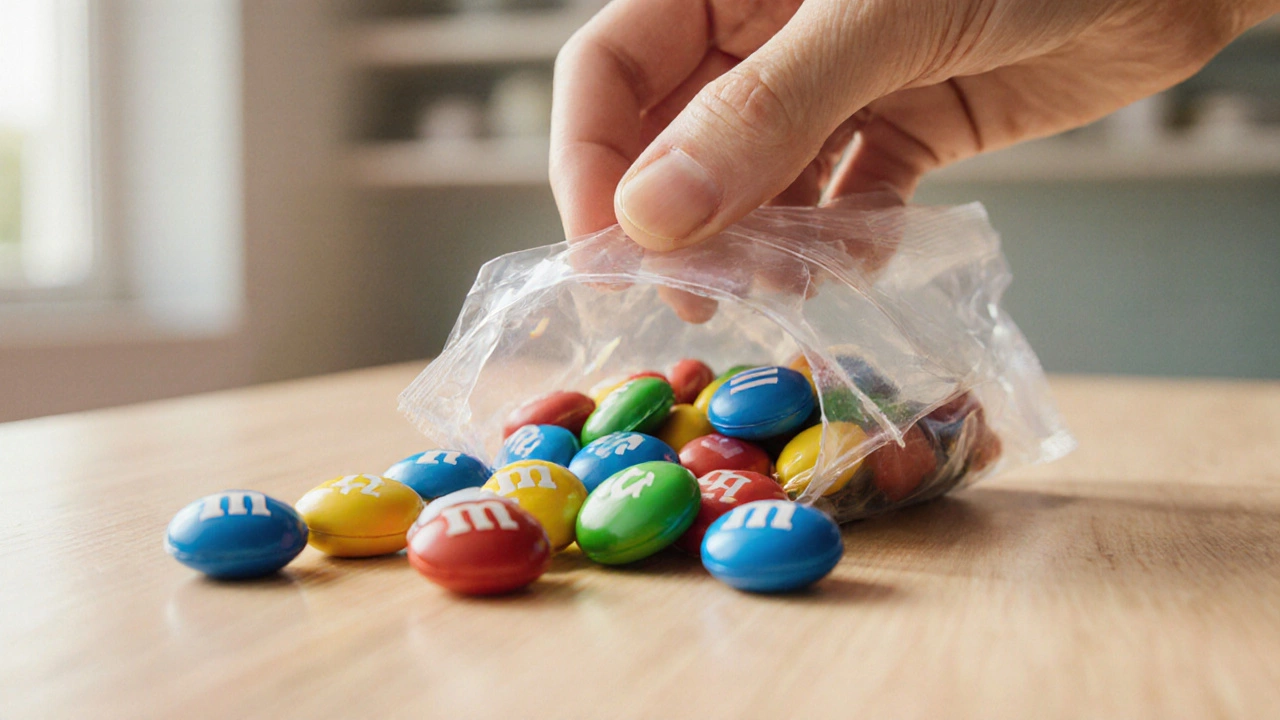Vegan M&Ms: Are They Real? Ingredients, Alternatives & How to Spot Them
Discover if vegan M&Ms exist, learn to read labels, explore vegan alternatives, and get a DIY recipe for plant‑based chocolate‑coated treats.
When you’re curious about M&Ms vegan, the question of whether those colorful candies fit a vegan lifestyle. Also known as Vegan M&Ms, it hinges on ingredient sources, manufacturing practices, and label clarity.
Understanding vegan candy, any sweet that contains no animal products helps you evaluate not just M&Ms but a whole aisle of treats. Ingredient label, the list of components printed on the package becomes your roadmap; look for dairy, gelatin, whey, or chocolate that lists cocoa butter derived from animal fats. When you spot ambiguous terms like "natural flavors," the food labeling, the legal rules governing how products are described often forces manufacturers to disclose animal‑origin ingredients.
Most traditional M&Ms use milk chocolate, which contains milk fat and dairy solids. That alone disqualifies them for strict vegans. Some regions offer a dark‑chocolate version that swaps milk for cocoa butter, a plant‑based fat. However, even dark chocolate can hide whey or casein as stabilizers. Knowing the M&Ms vegan status means checking the exact chocolate blend, not just the color of the coating.
Beyond chocolate, the candy shell itself usually relies on starch, sugars, and food‑grade dyes. Dyes derived from insects (like carmine) are rare in M&Ms but appear in other candies. If a shell lists "color added" without specifying source, it’s safer to assume non‑vegan unless the brand explicitly states a plant‑based dye.
For vegans who still crave that crunchy bite, a growing market of plant‑based alternatives exists. Brands now sell “vegan M&Ms‑style” bites made with soy‑based chocolate and natural fruit powders for color. These alternatives respect the same shape and snap while staying free from animal ingredients.
When you shop, keep a few practical steps in mind: 1) Scan the front for a vegan logo; 2) Read the backside ingredient list line by line; 3) Check the manufacturer’s website for a full allergen and vegan statement; 4) Trust reputable vegan‑certified brands over ambiguous store‑brand options.
Seasonal releases add another layer of complexity. Holiday editions often boast new flavors and limited‑time coatings, and manufacturers may experiment with dairy‑based fillings. Always repeat the label check each time a new pack hits the shelf.
If you’re cooking with M&Ms, you can still create vegan desserts by swapping the candy. Melt dark‑chocolate chips that are certified vegan, then coat regular M&Ms for a hybrid treat, or use the vegan alternatives straight into frosting, brownies, or parfaits.
Lastly, community resources like vegan forums and social media groups share up‑to‑date ingredient databases. A quick search can save you hours of label‑reading and keep you confident about what you’re eating.
All these tips tie back to the core idea: knowing the ingredient list, understanding food labeling, and spotting vegan candy options lets you decide if M&Ms fit your plant‑based diet. Below you’ll find a curated selection of articles that dive deeper into label analysis, ingredient swaps, and tasty vegan alternatives.

Discover if vegan M&Ms exist, learn to read labels, explore vegan alternatives, and get a DIY recipe for plant‑based chocolate‑coated treats.